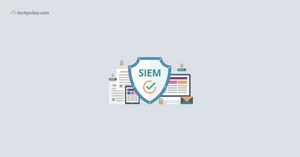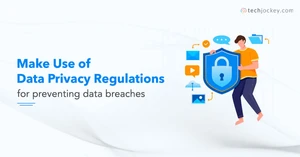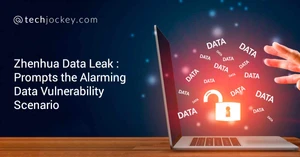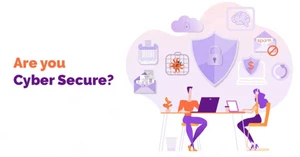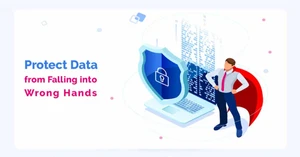What Is Data Security Software?
IT Data security software is a computer program that secures all types of data and prevents the scope of data thefts and breaches. From an email to the entire customer or vendor database, every form of information is protected with advanced security features.
Further, data security software monitors user activities for detecting intrusions and mitigating issues. It also assigns roles-based permissions to the critical data related to employees, customers, and business operations. The software offers secured archiving solutions for storing files & email and managing the encryption keys.
Data security solutions ensure the protection of all types of information, whether it’s mobile data, cloud data, emails, or internal data on servers. Major benefits of using data security tools are the reduced incidence of data theft and loss, improved data access governance, and compliance.
Why is Data Security & Privacy Important?
Data is the major asset of any growing business in today’s times. The alarming cyber security threats were highlighted in the IT threat evolution Q1 2018 Statistic report. It stated how millions of malicious installation packages were downloaded on mobile devices in the year 2018. There were further details regarding the existence of over a hundred million malicious URLs, which are a significant network threat.
From business transactions to the customer database and the knowledge base for internal & external communication, a large volume of data is generated every day. Retaining the data integrity is important for ensuring hassle-free business operations and keeping your sensitive information from falling into wrong hands.
Why do Businesses need to Invest in IT Security Software?
- Companies have a moral and legal obligation to protect the data of their customers and clients so that information doesn’t reach the wrong hands.
- Organizations have their reputation at stake if ever any data breach occurs. Simultaneously, there would be logistical and financial consequences too.
- Data security is important for protecting information against human error and inside threats.
- Businesses need to be well aware of where the data resides in their systems. Hence, the need for establishing data security through data masking and encryption.
- Robust data protection strategies ensure regulatory compliance and hassle-free audits.
- Data governance is important for protecting intellectual property and trade secrets.
Why Use Data Security Software?
- Secured valuable information: Data loss prevention or DLP security software protects the IT infrastructure of an organization and ensures complete security of business-critical information.
- Proper compliance: The best data protection software ensures FISMA, HIPAA, FIPS, and PCI/DSS compliance for sharing, circulating, and transmitting the business data.
- Higher market reputation: Data loss protection software protects all customer information to ensure that users trust your brand. Tighter information security with this software ensures better customer retention, higher sales, and a good brand reputation.
- Reduced costs: Data protection software prevents organizations from spending huge sums of money on inadvertent data retrieval and losses due to data breaches.
- Managing critical data: Data leak prevention software helps protect critical data like health information, personally identifiable information, intellectual property, and payment card information. Data security tools can be deployed for both cloud and on-premise environments.
- Automation & analytics: Data security software offers analytics for activity monitoring and keeping up with the privacy mandates of a growing team.
Popular Types of Data Security Software
- Data Loss Prevention Software: Data loss prevention software is critical for securing the data, maintaining backups, and ensuring complete compliance. All information is stored in a secured storage system with pre-defined procedures for resolving threats and anomalies.
- Cloud Security Software: This software is essential for securing of cloud computing applications and systems. Cloud security software provides capabilities such as malware protection, EDR (endpoint detection & response), firewall control and custom workspaces.
- Mobile Data Security Software: Mobile data security software provides endpoint protection for mobile applications against all types of network threats and data hijacking attempts. Advanced authentication and communication options ensure that all data is protected in an encrypted form.
- Database Security Software: Database security software ensures complete privacy compliance and firewall protection of the databases besides preventing unauthorized access.
- Cloud Encryption Software: Cloud encryption software secures cloud data by preventing other cloud tenants from accessing your business information. The software also prevents data corruption, theft, and exfiltration.
- Identity Management Software: Identity management software is used by organizations for preventing unauthorized access into their systems. You can set here user privileges for limited access to only the permitted end users.
- Data Masking Software: Data masking software is helpful in preventing any misuse of sensitive, confidential information. The software does this by replacing original data with fictitious information.
- Secure Backup Software System: Secure backup software system is used for securely storing diverse types of user files, such as videos, documents, images, and files.
- USB Data Security Software: This software offers protection against malicious threats infiltrating a USB device. Threats get scanned here and are immediately quarantined when detected.
Key Features of Data Security Software
- Activity auditing: Data security solutions are being trusted by IT departments for monitoring the activity logs of their users. This includes applications accessed by them and their sign-in and sign-off timings.
- Row-level security: Data security tools help control access to data in any database table and set different data visibility rules for every user. The access is defined based on the department and the nature of the work of every user.
- Contextual analytics: Data security products offer an adaptive approach for identifying where the data is at higher risk of loss or damage and suggests appropriate actions for mitigating such issues.
- Structured & unstructured data landscape: Data security tools help with discovering structured and unstructured data landscapes for locating the data footprint and eliminating security lapses.
- Embedding accurate labels: Data security solutions help embed accurate labels for automating the data lifecycle management. This is required for minimizing the time and effort in ensuring data compliance & security.
- 360-degree security: Data protection software offers 360-degree security against DDoS (distributed denial of service) attacks through database scanning, malware blocking, and eliminating vulnerabilities.
- Site acceleration: Software to protect the data ensures proactive remediation and site acceleration for improving the overall site’s performance along with the speed of every web page.
- Endpoint management: Data leak prevention software offers three leveled architecture patterns for protecting endpoints and networks from both internal and external threats. providing visibility into the different levels of a computing system including the CPU.
- Threat intelligence & logging: DLP software offers threat intelligence and logging searches for determining the warning signs and sending alerts as and when threats get detected.
- DLP configuration: Data security tools can be used for setting protocols for alerting backup teams and administrators to encrypt the data while at rest, or as an and when an incident occurs.
- Deduplication: Data loss protection software creates synthetic backup files for either eliminating the redundant documents or reducing their size.
- Data masking: The feature in data security tools disguises or encrypts the data for protecting sensitive information and making it available only to pre-approved users.
Data Security Software Trends
1. Applying blockchain principles:
- Blockchains provide a decentralized data storage system for protecting sensitive data and preventing hackers from getting access to the existing databases.
- Based on the principle of consensus, decentralization & cryptography, blockchains have the data stored in multiple blocks. Each block comprises different transactions. All these transactions are based upon a consensus mechanism.
- Data stored in blockchains cannot be easily tampered with or hacked as blockchain networks immediately notify of any modifications made in the ledger.
2. CARTA approach:
- The continuous Adaptive Risk and Trust Assessment (CARTA) approach have been used by organizations for preventing data breaches and cyber-attacks. The approach is based on the principles of predicting & preventing and detecting & responding.
- The methodology uses predictive powers for continuously assessing the threats lingering around. CARTA approach undertakes real-time monitoring and assessment for analysing traffic patterns, asset behavior, and user network.
3. Patching:
- Patching or application testing helps in checking the vulnerable data points for ensuring strong data security. The process involves inserting codes or patches into the codes of existing software programs.
- Patching is uniformly applied and there are regular updates to it for fixing immediately bugs and errors. In case required, such patches are modified or changed depending on the code requirements of the different software programs.
4. Containerization:
- Containerization is the process of implementing security policies and tools for protecting a system’s infrastructure, supply chain, software, and runtime.
- Containerization helps in the smooth running of applications besides improving scalability, security, and increasing portability.


















